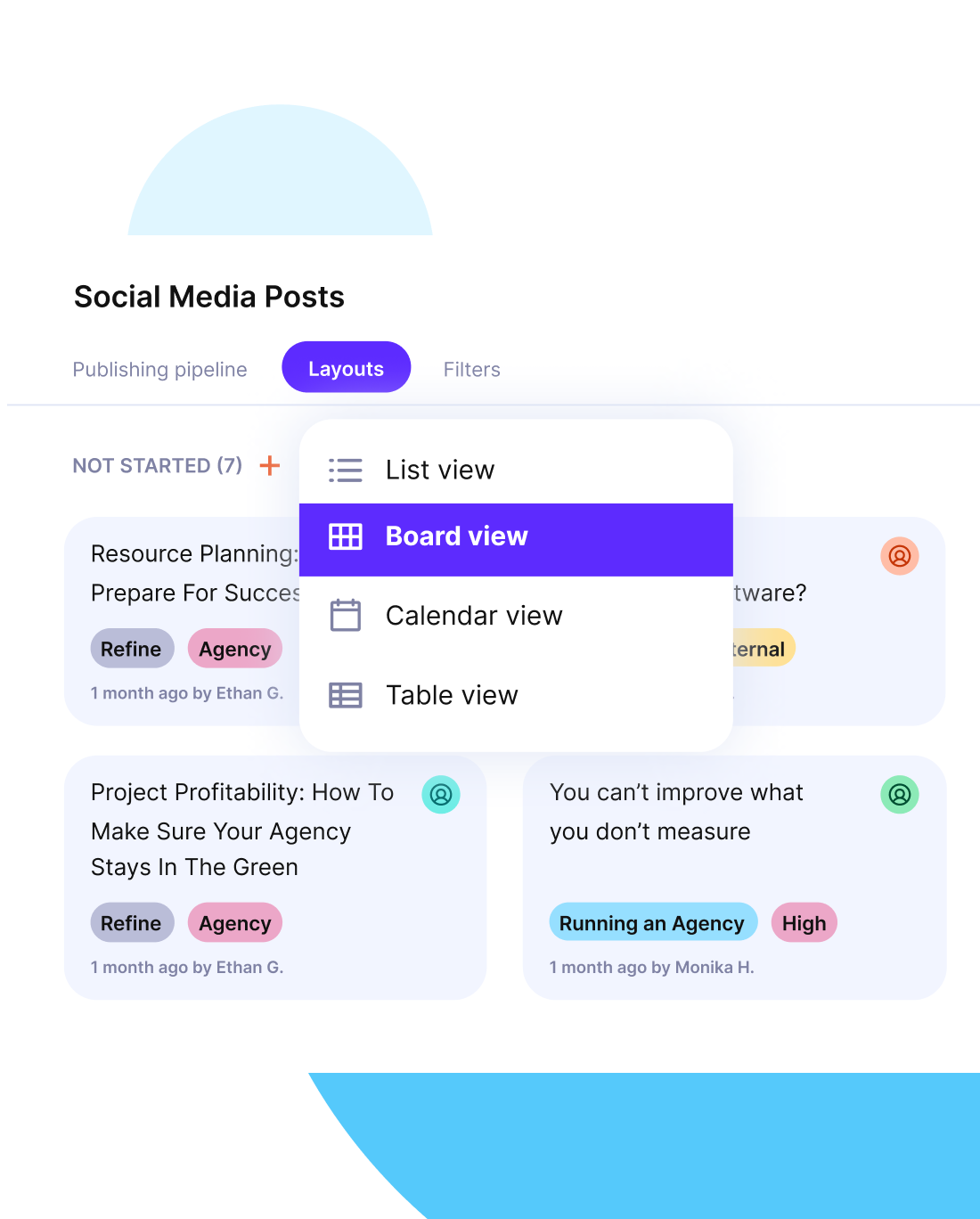What Is Digital Project Management? Detailed Guide + Tips
Digital project management is how you manage technology projects using digital workflows and collaboration tools.
In case you want to learn more about this digital and remote-friendly approach, you’ve come to the right place. By the end of this article, you’ll learn the key phases, methods, tools, implementation tips, and best practices you need to plan, track, and deliver digital projects on time and budget.
Key Takeaways
- Digital project management (also known as virtual, online or cloud-based project management) focuses on delivering web-enabled initiatives using online tools, platforms, and cross-functional collaboration strategies.
- Agile and Waterfall methodologies adapt to technology-driven projects, with hybrid approaches accommodating evolving requirements and feedback cycles.
- Essential skills include technical proficiency, business acumen, leadership capabilities, and mastery of PM tools like Productive.
- Success measurement involves tracking KPIs like delivery timelines, sticking with the budgets, and stakeholder satisfaction using SMART criteria.
What Is Digital Project Management?
Digital project management is the practice of managing technology-driven initiatives like websites, apps, web-enabled deliverables, online marketing, or software development by applying core PM practices in a fast-moving virtual environment.
This remote-friendly PM approach requires quick pivots as requirements evolve, ongoing stakeholder feedback, and short development cycles that match the pace of technology.
To be good at it, you’ll need the technical know-how (for coordinating digital tools), as well as a deep understanding of the most important virtual PM methods (more on that later). You should also have hard and soft project management skills.
Differences Between Digital and Traditional Project Management
The biggest difference between digital and traditional project management is that the traditional approach relies on upfront planning, rigid phases, and fixed scopes, whereas the digital PM works best on rapid iterations, real-time feedback, and flexible roadmaps.
When you’re making or executing a project plan, you’re constantly tweaking requirements based on user data, using cloud-based tools to collaborate instantly, and breaking work into short sprints instead of long, linear cycles.
| Aspect | Traditional Project Management | Digital Project Management |
|---|---|---|
| Planning | Up-front, detailed plans and fixed scopes | Rolling forecasts and flexible roadmaps |
| Workflow | Linear phases (Waterfall) | Iterative sprints or cycles |
| Change Handling | Changes discouraged, require formal change control | Embraces change with regular backlog grooming |
| Collaboration | In-person meetings and formal status reports | Real-time collaborating via cloud tools and chat |
| Feedback Loop | Periodic reviews at milestones | Continuous stakeholder feedback throughout delivery |
| Delivery Speed | Slower, at end of project | Faster, with incremental releases |
Good Examples of Digital Projects
Examples of digital projects include building a new website, launching a mobile app, or rolling out a cloud-based software platform.
Additional examples would be a UX/UI redesign for an existing product, setting up an e-commerce store, running a online marketing campaign with analytics tracking, implementing a CRM system, or leading a company-wide digital transformation initiative that modernizes legacy processes.
What all of these have in common is the use of technology to solve real business problems. They usually follow rapid, iterative development cycles rather than a fixed, one-time rollout.
What Are the Phases of Managing and Coordinating Digital Projects?
Digital projects usually move through five key phases: defining requirements, planning and design, execution (development), testing and quality assurance, and deployment with ongoing maintenance.
Here’s a short phase-by-phase breakdown:
- Requirements & Initiation: Gather goals, user needs, and technical specs to set a clear project scope.
- Planning & Design: Turn requirements into wireframes, prototypes, and a detailed roadmap with timelines and resource allocations.
- Execution & Development: Build the product in sprints or phases, with regular check-ins to keep everyone aligned.
- Testing & Verification: Run user and QA tests, fix bugs, and refine features based on real feedback.
- Deployment & Maintenance: Launch the project, monitor performance, and roll out updates or improvements as needed.
What Does a Digital Project Manager Do?
A digital project manager oversees tech-focused initiatives by blending core project management methods with the fast pace of digital work.
To be point-on, a digital project manager defines the project scope, breaks it into short, iterative cycles, and keeps stakeholders in the loop through regular demos and feedback sessions.
Day-to-day responsibilities include:
- Coordinating designers, developers, and marketers.
- Setting priorities in a backlog.
- Tracking progress in tools like Productive.
- Pivoting quickly when requirements evolve.
Titles and Variations of Digital Managerial Roles
There’s a very wide spectrum of job titles and leading positions of managing technology-driven initiatives across various industries. We talk more about managerial roles in another article. For the digital part, common title variations include:
- Web Project Manager focuses on website development and online platforms.
- Digital Producer emphasizes content creation and multimedia deliverables.
- Technical Project Manager highlights software development and IT infrastructure.
- Digital PM leads digital initiatives.
- Product Manager oversees the digital product lifecycle.
What Are the Required Skills for Virtual Project Management?
The key skills for virtual project management are a blend of tech know-how, organizational savvy, and strong people skills.
These abilities fall into the domains of:
- Technical proficiency: Be comfortable with tools like Productive and understand Agile or iterative workflows so you can break a big project into bite-sized sprints.
- Business acumen: You need to understand organizational objectives and market dynamics.
- Leadership and capabilities to collaborate with others: Managers are leaders, and these help you build trust, resolve conflicts, and keep your team motivated, no matter where they’re working from.
- Clear communication: Whether you’re updating a distributed team or briefing stakeholders, you need to keep everyone on the same page.
- Organizational abilities and initiative: You need to spot risks early and adapt when priorities shift, using data and feedback to guide your decisions.
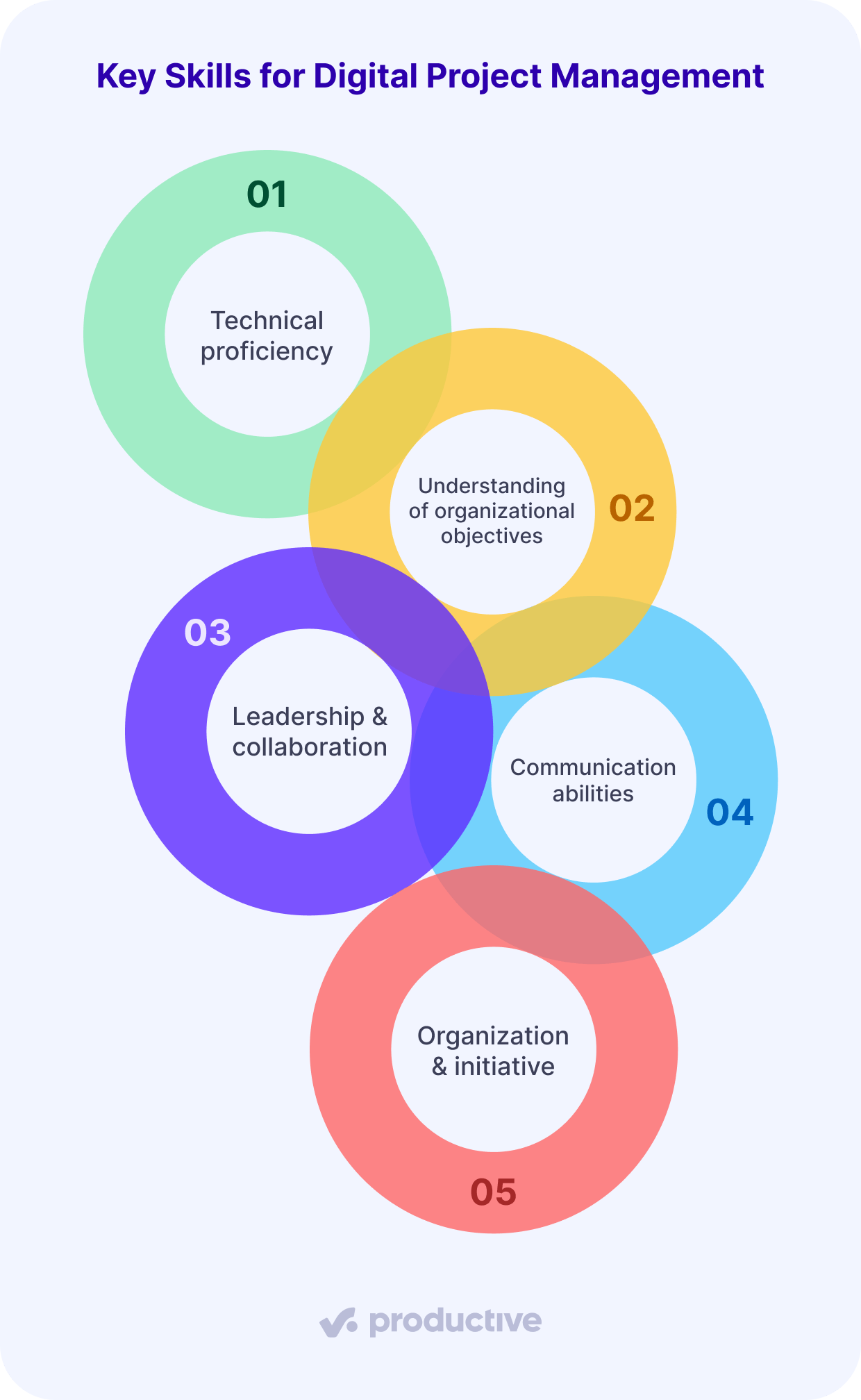
These interconnected skills form the foundation for managing digital projects that meet deadlines, stay within the budgets, and deliver measurable value to your organization.
Other than technical proficiency, traditional and digital project managers have a very similar skill set. In case you have more questions, we have more answers in our detailed article about what a project manager does. You’re welcome.
What Are the Best Tools for Managing a Digital Project?
The best tools for managing a digital project are platforms that bring every part of your project (e.g., tasks, timelines, budgets, and conversations) into a unified workspace. Their purpose is to help you never lose track of what’s happening or who’s responsible for the specific task.
These tools are digital project management software, collaboration and communication tools, and task management tools. Keep in mind that there are tons and tons of different tools for each category.
In case you’d like to get a detailed overview of all options available, it’s a great idea to have a look at our top project management tools list.
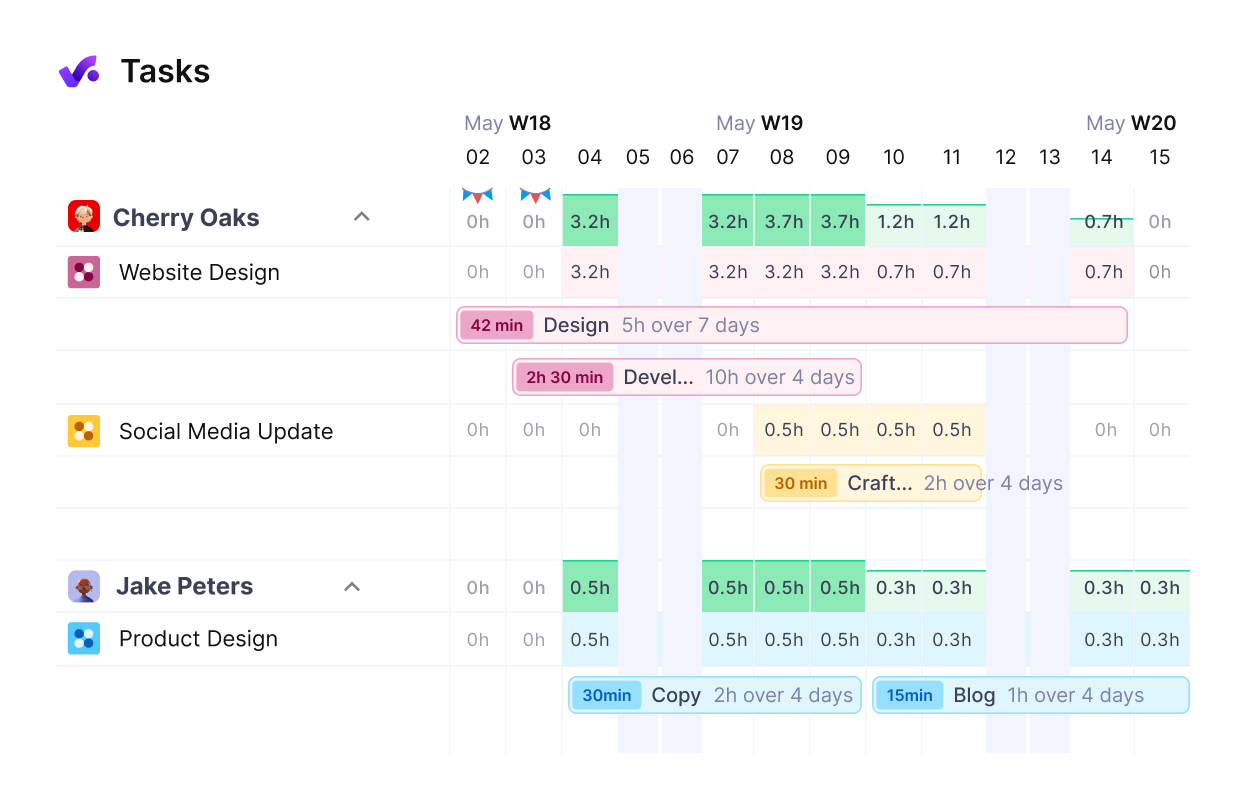
Manage your projects from start to finish with Productive.
Essential Digital PM Software Platforms
Today’s project management tools replace messy spreadsheets and endless email threads. All-in-one platforms like Productive have essential features that streamline your virtual workflow:
- Centralized project status dashboards that eliminate excessive status meetings.
- Budget tracking capabilities with real-time financial monitoring.
- Task assignment systems with automated notifications.
- Document centralization for improved accessibility.
- Integration capabilities with existing apps (e.g., accounting, billing, communication, sales).
Manage digital projects with Productive
Below is a short, “Top 5” overview of the best online PM tools.
| Platform | Project Management Coverage | Notable Strength | Ease of Use |
|---|---|---|---|
| Productive | Full PM, budgeting, resource & capacity planning, integrated time trackers, financial forecasts, reporting, CRM & more | Everything you need to manage projects, people, clients and finances under a single roof | Modern, uncluttered |
| Asana | Task management, basic workload views, milestones | Highly intuitive boards & timelines | Very easy |
| Trello | Simple Kanban boards, Power-Up integrations | Quick setup and visual simplicity | Extremely easy |
| Wrike | PM, Gantt, resource bookings & workload charts (premium) | Strong scheduling and reporting | Powerful but steeper |
| Monday.com | PM, custom dashboards, workload & pipeline views | Flexible dashboards and automations | Visually intuitive |
Remote Collaboration Tools
Collaboration tools keep your team talking, sharing, and moving forward without the need for endless status meetings. Modern platforms let you assign tasks and check progress in real-time.
The idea here is to keep all communication in from the same place you store your project files. When your PM software has document collaboration and comments on tasks, you spend less time hunting for updates and more time getting work done.
In today’s flexible environments, digital tools for hybrid work make this even more powerful by supporting both in-office and remote collaboration seamlessly. This tight integration means you can shift resources quickly, track hours exactly, and stay synced with clients and stakeholders.
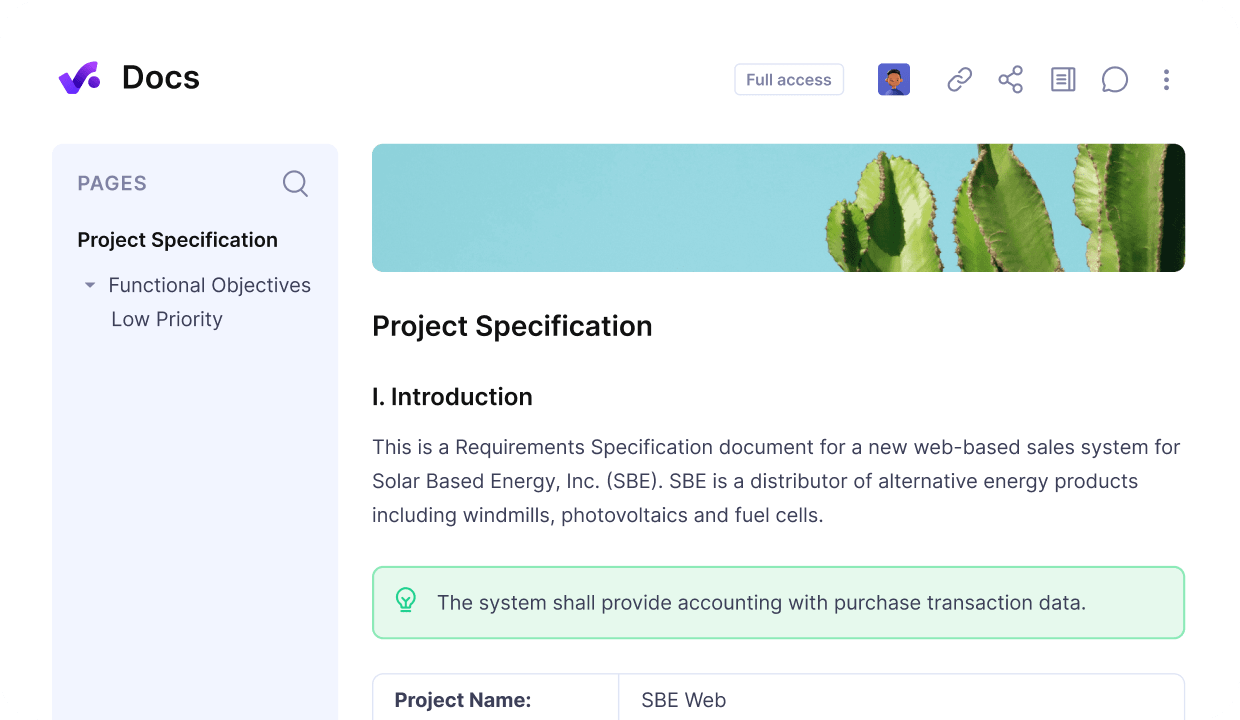
Share and collaborate on project documentation in Productive.
Online Project Tracking Systems
These platforms pull together every task, deadline, and budgeting line into a single place, helping you balance resources and keep your schedule on track.
You’ll get drag-and-drop Gantt charts to map out timelines, a Kanban board view to steer Agile sprints, built-in time trackers for real resource visibility, and budgeting tools that flag overspend before it happens.
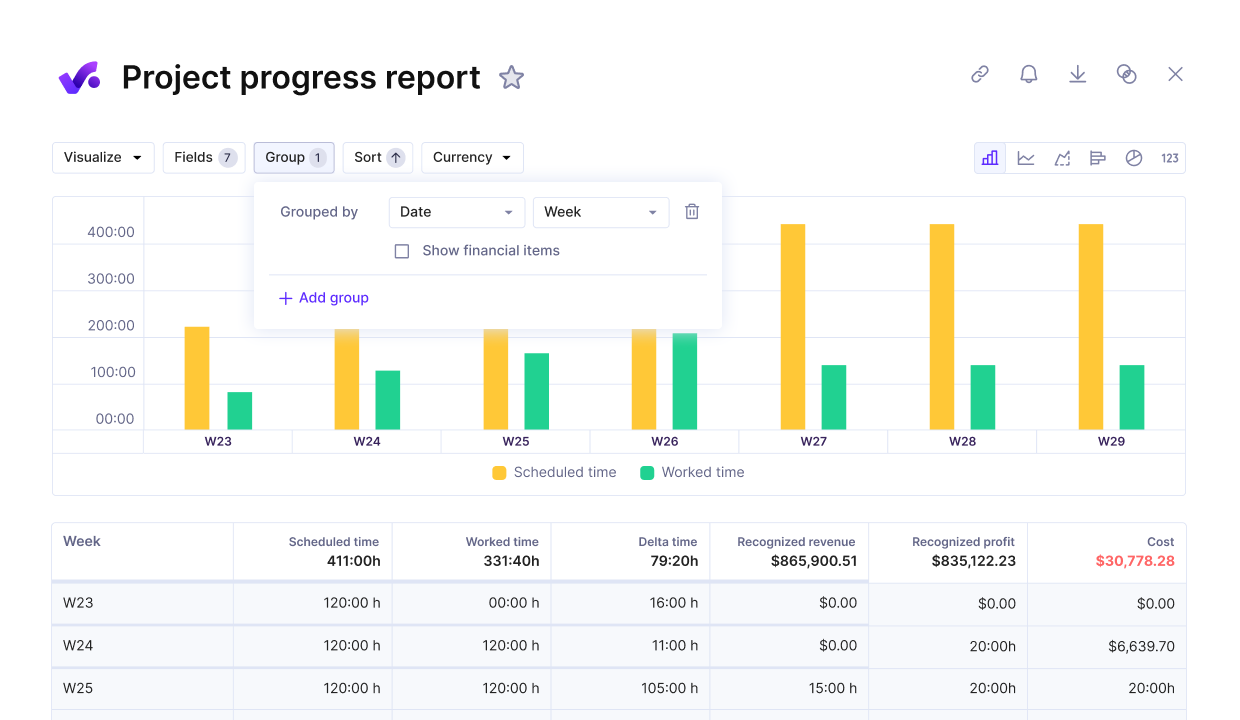
Track project progress, remaining budgets, and work hours in Productive.
Managers need project tracking systems to turn raw data into clear, actionable insights so they always know where (and how) their work stands. Before we wrap up with the digital tools section, you should know that there’s also the emerging AI-powered PM software.
What makes it special is that it cuts out manual work and provides business intelligence, but we’ll save that topic for another article.
| Task Management Platform | Key Tracking Features | Integrations & Automation | Methodology Support | Ease of Use |
|---|---|---|---|---|
| Productive | Gantt & Kanban views, built-in time trackers, live budgets & profit dashboards | Native Slack, Xero, BambooHR integrations; custom automations | Agile, Waterfall, Hybrid | Clean, intuitive |
| ClickUp | Customizable dashboards, timeline & workload views, time tracking | Zapier, GitHub, Google Drive | Agile, Waterfall, Scrumban | Powerful, mid-curve |
| Jira | Advanced Scrum/Kanban board views, sprint reports, release burndowns | Bitbucket, Confluence, hundreds via Marketplace | Agile (Scrum & Kanban) | Developer-focused |
| monday.com | Timeline, calendar, workload & dependency tracking | Slack, Zoom, Dropbox, native automations | Agile boards, basic Waterfall | Visually intuitive |
| Asana | Timeline view, boards, goals tracking, milestone markers | Slack, Google Drive, Salesforce | Agile-friendly, simple Waterfall | Very easy |
What Are Online PM Methodologies?
Digital project management methodologies are frameworks like Agile (with Scrum or Kanban), Lean, and hybrid approaches.
They break work into short, iterative cycles while including continuous feedback and letting teams change priorities quickly as requirements change. These methods replace rigid, phase-gate models with flexible roadmaps that keep online initiatives aligned with fast-moving business needs.
For more context, definitely check out our massive list of the best PM tools and techniques.
| Methodology | Use Case | Best For | Core Focus |
|---|---|---|---|
| Agile | Projects with evolving requirements and frequent feedback loops | Cross-functional teams needing rapid delivery and flexibility | Iterative sprints, continuous stakeholder engagement |
| Scrum (Agile Subset) | Complex virtual projects with shifting priorities | Cross-functional teams that thrive on rhythm and accountability | Time-boxed sprints, defined roles, regular retrospectives |
| Kanban | Ongoing online operations or maintenance work | Teams needing continuous flow and WIP limits | Visual workflow, pull-based task management |
| Waterfall | Well-scoped projects with stable requirements | Projects demanding clear, sequential phases and strict deadlines | Linear phases, fixed deliverables |
| Hybrid | Initiatives needing both adaptability and structure | Teams balancing milestone predictability with iterative feedback | Merges Agile’s flexibility with Waterfall’s discipline |
Agile Approaches
Agile methodologies break big online projects into short, focused cycles so you can deliver value fast and shift direction when priorities change. In Agile, you’ll run work in sprints or on a Kanban board, gather feedback regularly, and tweak your plan as you go.
Key Agile practices include:
- Scrum: Organize work in time-boxed sprints with clear roles like a Product Owner and Scrum Master.
- Kanban: Visualize your workflow and limit how many tasks are in progress at once to keep things moving smoothly.
- Daily stand-ups: Meet briefly every day to share updates and tackle blockers together.
- Sprint retrospectives: Pause at the end of each cycle to celebrate wins and figure out what to improve next.
- Cross-functional collaboration: Bring designers, developers, and other experts together so you can solve problems faster and break down silos.
In case you’d like to implement Agile, you should definitely check out big list of the best Agile PM tools.
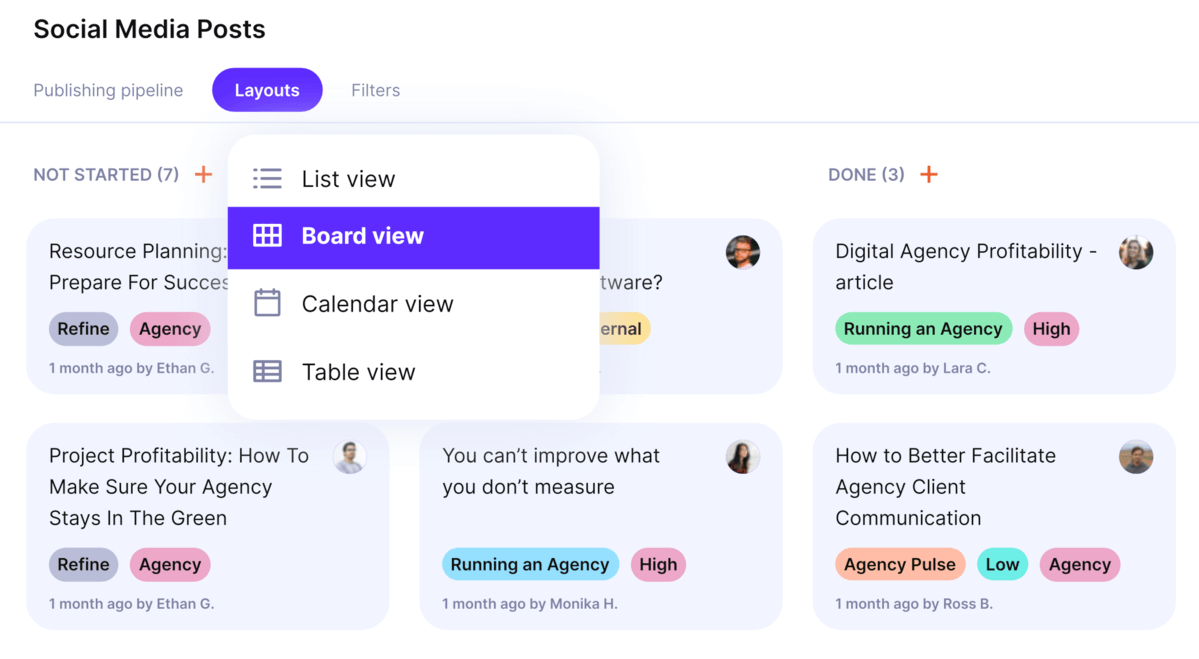
Manage Agile sprints with Productive’s Kanban view.
Waterfall Methodology
Waterfall is a step-by-step approach where you complete a phase before moving to the next. It starts with gathering requirements, moving to design, then building, testing, and finally, maintenance.
It works best when you know exactly what you need upfront and don’t expect major changes.
Each phase has its own deliverables and sign-off, so accountability is crystal clear. Keep in mind that if you need to revisit an earlier phase, it can slow you down and drive up costs, which makes Waterfall a poor fit for projects that require frequent course corrections.

Manage your projects from start to finish with Productive.
Hybrid Project Management Techniques
Hybrid project management techniques blend the best of both worlds – Agile’s quick cycles and Waterfall’s clear structure. The idea here is to get stability without losing flexibility.
With this approach, you set firm project goals but leave room to tweak scope as you learn more. Keep everyone on the same page with regular check-ins, then adjust your plan whenever stakeholder feedback calls for it.
Use tools like Productive when you’re sprinting through Agile phases and switch to Gantt chart view when you need strict oversight. When you customize your mix of methods to fit each project and your team’s style, you’ll boost your chances of hitting deadlines and staying on budget.
How To Implement Online Project Management?
You implement online project management by rolling out the right tools, setting clear success metrics, and guiding your team through the change from old-school methods to online workflows.
Start the implementation by choosing a PM tool that matches your needs. Map out key performance indicators (like on-time task completion and team response times). Next, anticipate possible risks or obstacles (tool resistance, training gaps, data migration issues) and build in quick feedback loops so you can adjust your rollout plan in real-time.
You need clear goals, regular check-ins, and visible progress reports to keep everyone aligned from day one. IT implementation is a huge topic that takes a lot more than a blog post to cover.
For now, you have a detailed summary with key implementation steps and considerations. In case you’d like to go digital right away, it’s a great idea to book a short demo with Productive (links are in the header and at the end of the article).
What Are the Best Practices of Digital Project Management?
The best practices of digital project management include setting clear goals, working in short iterative cycles, maintaining transparent communication, using integrated all-in-one tools, tracking key metrics, building regular feedback loops, planning for change, and investing in continual team learning.
In case this advice sounds too obvious, here’s a bullet list with more context:
- Define clear goals and scope upfront. Your team needs to know exactly what they’re building, why it matters, and what “done” looks like before you start.
- Work in short, iterative cycles. Break work into sprints or phases, deliver something usable each time, and use feedback to steer the next round.
- Communicate constantly and transparently. Include chat, file sharing, and status updates into your workflow so nobody’s left in the dark.
- Use integrated, all-in-one tools. Pick a platform that handles planning, tracking, collaborating, and reporting in one place to avoid app-hopping, and data errors between fragmented tools.
- Measure what matters. Track real-time metrics like task completion rates, budget burn, team utilization. Share those dashboards and reports so that everyone sees progress.
- Build in regular feedback loops. Hold sprint reviews, demos, and retrospectives to catch issues early and keep improving.
- Plan for change and risks. Anticipate shifting requirements, schedule “what-if” scenarios, and have a clear change-control process ready.
- Invest in your team. Train everyone on the tools and methodologies you choose, and encourage a culture of continuous learning
Final Takeaway: How To Manage & Deliver Digital Projects With Success
Managing and delivering online projects comes down to the tools and workflows your team uses. Even though everyone is behind a screen somewhere far away, you’ll always be managing people and their day-to-day activities.
Keeping project team members aligned and motivated is a lot easier when you pair the best practices with the right tools we’ve discussed before.
In case you want to transition to digital project management as soon as possible, the best first step is booking a short 30-min demo with Productive.
Manage Digital Workflows with Productive
Productive unifies task management, resource planning, time tracking, and financial forecasts into an all-in-one project management solution
